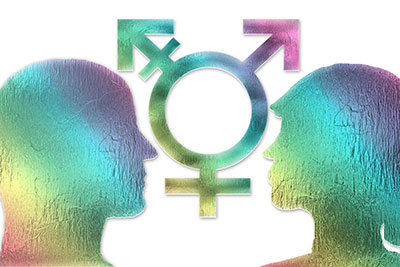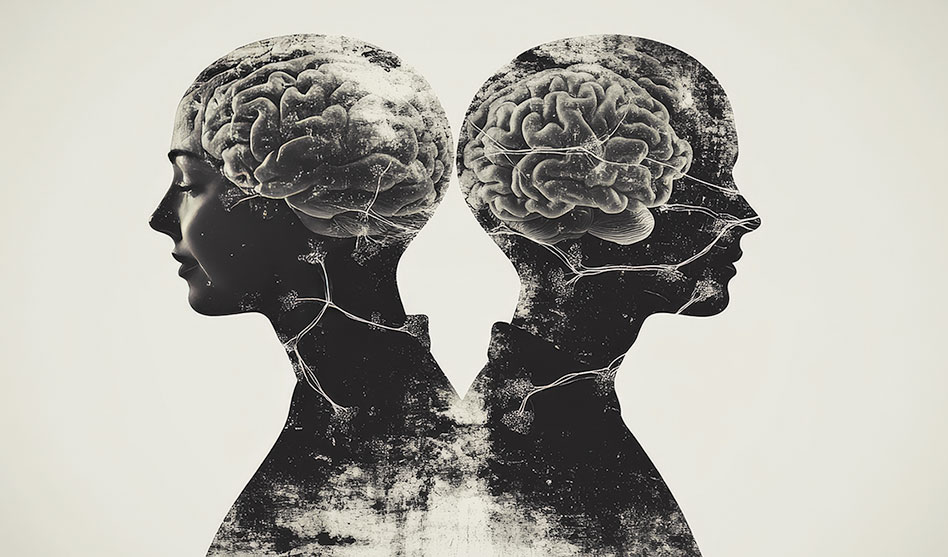Exploring the spectrum of gender identities
MELISSA WHITLER | NBCU Fellow
Melissa@DallasVoice.com
What it means to be transgender has been discussed a lot in American society, yet so often actual trans voices have been and are being left out of the conversation. Many — including within the LGBTQ community — hold internal biases against gender nonconformity. Yet everyone has a gender identity, and being able to comfortably explore it adds so much richness to life.
For many people, their understanding of a person being transgender means that a person identifies with the “opposite” gender than the one they were assigned at birth. The transgender experience, in their understanding, follows a path of transitioning from one gender to another after coming out.
And while that is the experience of some trans men and women, it is not that way for everyone.
Transgender has come to encompass anyone who does not identify with the gender they were assigned at birth. This includes people who identify as nonbinary, genderqueer, agender and genderfluid. The Human Rights Campaign estimates that there are more than two million trans people in the U.S.
 Nonbinary is a term most people have heard, describing someone who is not a man or a woman. Despite how it is often used, though, it is not just a third gender category. It is an umbrella term that covers a wide expanse of experiences. This is distinct from agender, which is when a person has no gender or feels gender neutral.
Nonbinary is a term most people have heard, describing someone who is not a man or a woman. Despite how it is often used, though, it is not just a third gender category. It is an umbrella term that covers a wide expanse of experiences. This is distinct from agender, which is when a person has no gender or feels gender neutral.
Genderqueer is another umbrella term for a person whose gender isn’t man or woman, but outside the binary. There are more specific terms to describe people who experience their gender as more masculine or feminine. This can be reflected by their appearance and how they dress but does not always correlate.
Some people will identify as transmasc or transfemme, meaning they align with a masculine or feminine experience but aren’t a man or a woman. There are also demiboys and demigirls, who partially identify with the experience of being a man or a woman.
The term genderfae is used for a person who experiences genderfluidity but never masculine genders. Genderfawn is used in a similar way for someone who never experiences feminine genders.
While we have many different identities with established definitions, the beauty of gender is that it is an extremely personal and expansive thing. Many cisgender people want clear explanations in an effort to understand, but real inclusion comes with embracing the unknown and even the confusion.
The trans experience is different for everyone and not simple to explain. Some people come out when they are very young, and some much later in life.
 There is no set timeline for coming out and transitioning.
There is no set timeline for coming out and transitioning.
As a nonbinary person, I experience gender as a very fluid thing that is not set but which instead fluctuates. I don’t feel like other nonbinary people necessarily have the same gender as me in the way women feel a certain bond or understanding with other women. There is a kinship that exists with other trans people, but also different personal understandings that allow for great conversations.
It is a part of me I want others to recognize so that they can know and understand me.
There is often this assumption that trans people aspire to “pass,” or not be physically recognizable as trans. For many, passing can be a matter of safety, as being visibly trans can be potentially dangerous in certain situations.
Yet how one looks does not relate to one’s gender identity. Someone might dress more masculine, feminine or androgenous, but their manner of dress might not align with their pronouns or gender.
Still, there is bias even in trans spaces against those who don’t pass. But if a person chooses not to change anything about their appearance when they come out, that doesn’t make them any less trans.
There also is the idea that being nonbinary is being ‘women lite.’ People expect a certain look for nonbinary people that usually excludes more masculine presenting people and those assigned male at birth. In spaces meant to be inclusive and accepting, there are still these biases that prevent people from feeling safe and accepted.
The gender binary is not rooted in scientific or biological facts but rather a Western colonial ideology. In many cultures across the world there have always existed more than two gender categories.
Some Native American communities recognized Two-Spirit as a distinct gender category. These people combined aspects of men and women while also having traits unique to their gender. In Hindu cultures, the gender category of hijra can be traced back to their holy texts. Hijras consider themselves to be a third gender, neither male nor female.
To erase these identities is to oppress non-white cultures and erase the deep history of gender-nonconformity.
Biology also supports the concept that there are more than two distinct genders. The Office of the United Nations High Commissioner for Human Rights estimates that 1.7 percent of the population are born with intersex traits. This means people are born with biological characteristics that do not fit binary understandings of male and female.
While this might seem like a small number, it is comparable to the number of people born with red hair. And we don’t say they don’t exist.
The very existence of transgender people is contested in American politics, making even basic respect something we must fight for. Using someone’s correct name and pronouns and correcting yourself when you make a mistake are the bare minimum.
Real acceptance and understanding go beyond this. Someone can still use my correct pronouns and internally view me as a woman. There is a mental step that individuals need to take to really view a trans person as who they are — just as ‘loving’ a gay person and still considering homosexuality a sin isn’t real acceptance.
It takes more than words to be inclusive.
For our community to be open and accepting, we all must take time to examine our internal biases and sit in the uncomfortable. Even trans people can have internalized transphobia, meaning we all have to consider other experiences.
While we like to seek definitive categories, what matters most is how an individual person identifies and understands themself. There is no right or wrong way to be transgender or nonbinary, just as there is no right or wrong way to be a man or a woman.

